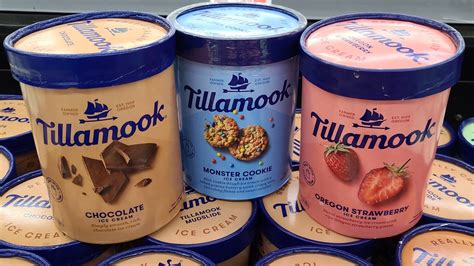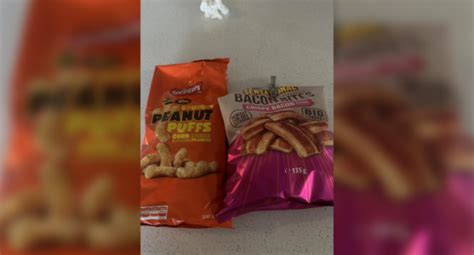
Tillamook Creamery is discontinuing its beloved Old-Fashioned Vanilla ice cream flavor, sparking dismay among loyal customers and raising questions about the brand’s strategic direction. Citing evolving consumer preferences and a focus on innovation, the Oregon-based dairy cooperative confirmed the flavor’s departure, marking a significant shift in its product lineup.
Tillamook County Creamery Association, known for its high-quality dairy products, announced the decision to retire its Old-Fashioned Vanilla ice cream, a staple for many years. The news has been met with a wave of disappointment from consumers who cherished the classic flavor. The company stated that this move is part of a broader strategy to innovate and cater to changing consumer tastes, although they acknowledge the strong connection many people have with the specific flavor.
“We know that many people are sad to see it go,” Tillamook said in a statement. “Like any good ice cream maker, we’re always innovating and looking for ways to introduce new flavors and bring unique taste experiences to our fans. With that comes the hard decision to retire flavors.”
The decision to discontinue Old-Fashioned Vanilla raises several questions about Tillamook’s future product strategy and its commitment to traditional flavors. While the company emphasizes its focus on innovation, the removal of a classic flavor risks alienating long-time customers who appreciate the brand’s heritage and consistent quality. The retirement of this flavor prompts a discussion about the balance between innovation and preserving the legacy flavors that define a brand.
Consumer Reaction and Social Media Response
The announcement was met with immediate reaction on social media platforms. Customers expressed their dismay and disappointment, with many questioning the rationale behind removing a flavor they considered a classic.
“Why, Tillamook, why?” one user wrote on X (formerly Twitter). “Old-Fashioned Vanilla was the best! What are we supposed to eat now?”
Another user commented on Facebook, “This is a sad day for ice cream lovers. Old-Fashioned Vanilla was the perfect base for everything. Please bring it back!”
The social media backlash underscores the emotional connection consumers have with specific food products, especially those associated with nostalgic memories. Brands often face the challenge of balancing innovation with the need to maintain their core customer base. In Tillamook’s case, the decision to discontinue Old-Fashioned Vanilla has clearly struck a nerve with a significant portion of its customer base.
Tillamook’s Rationale: Innovation and Evolving Tastes
Tillamook defended its decision by emphasizing the need to innovate and adapt to evolving consumer preferences. The company noted that it regularly reviews its product portfolio to identify opportunities for new flavors and product lines. According to Tillamook, retiring certain flavors is a necessary part of this process.
“We are always evaluating our product lineup to ensure we’re meeting the needs and preferences of our consumers,” said a Tillamook representative. “This sometimes means making difficult decisions, such as retiring a beloved flavor to make room for new and exciting offerings.”
The company highlighted its commitment to introducing innovative flavors and unique taste experiences. Recent examples include limited-edition flavors and collaborations with local artisans. Tillamook believes that these new offerings will appeal to a broader range of consumers and help the brand maintain its competitive edge in the ice cream market. However, the question remains whether these new flavors will compensate for the loss of a classic flavor that resonated with a core group of customers.
Impact on Retailers and Distributors
The discontinuation of Old-Fashioned Vanilla will also have an impact on retailers and distributors who carry Tillamook products. Retailers will need to adjust their inventory and shelf space to accommodate the change. Distributors will face the challenge of managing the transition and ensuring that retailers have adequate supplies of alternative flavors.
Some retailers may be concerned about the potential loss of sales associated with the removal of Old-Fashioned Vanilla. The flavor was a consistent seller and a popular choice among many customers. Retailers will be closely monitoring consumer reaction to the change and assessing the impact on their overall ice cream sales.
Tillamook is working closely with its retail and distribution partners to ensure a smooth transition. The company is providing retailers with information about alternative flavors and marketing materials to promote the new product lineup. However, the ultimate success of the transition will depend on how well consumers respond to the new flavors and whether they can find suitable replacements for Old-Fashioned Vanilla.
The Future of Tillamook’s Product Strategy
The decision to discontinue Old-Fashioned Vanilla raises broader questions about the future of Tillamook’s product strategy. Will the company continue to prioritize innovation over tradition? Will it be willing to retire other classic flavors in the pursuit of new and exciting offerings? These are important questions for consumers and industry observers alike.
Tillamook has a long and storied history of producing high-quality dairy products. The company has built a strong brand reputation based on its commitment to quality, tradition, and community. However, in an increasingly competitive market, Tillamook faces the challenge of balancing its heritage with the need to innovate and adapt to changing consumer preferences.
The discontinuation of Old-Fashioned Vanilla may be a sign that Tillamook is willing to take more risks and embrace new directions. Alternatively, it could be a one-time decision driven by specific market conditions. Only time will tell how Tillamook’s product strategy will evolve in the years to come.
Comparisons to Other Brands and Industry Trends
Tillamook’s decision to discontinue Old-Fashioned Vanilla is not unique in the food industry. Many other brands have faced similar challenges in balancing tradition with innovation. Some companies have successfully introduced new products while maintaining their core offerings. Others have struggled to adapt to changing consumer tastes and have seen their market share decline.
For example, Ben & Jerry’s, another well-known ice cream brand, has a long history of introducing innovative and sometimes controversial flavors. However, Ben & Jerry’s has also maintained a strong lineup of classic flavors, such as Chocolate Chip Cookie Dough and Cherry Garcia, which remain popular with consumers.
Similarly, Häagen-Dazs has successfully expanded its product portfolio while preserving its reputation for high-quality, traditional flavors. Häagen-Dazs offers a range of classic flavors, such as Vanilla, Chocolate, and Strawberry, as well as a variety of more innovative and exotic flavors.
The key to success in the food industry is to understand consumer preferences and to develop products that meet their needs. Brands must also be willing to take risks and experiment with new flavors and product formats. However, they must also be careful not to alienate their core customer base by abandoning the classic flavors and products that have made them successful.
The Importance of Nostalgia in Food Marketing
Nostalgia plays a significant role in food marketing. Many consumers have strong emotional connections to specific food products, especially those associated with childhood memories. Brands often leverage nostalgia in their marketing campaigns to evoke positive emotions and create a sense of connection with consumers.
The discontinuation of Old-Fashioned Vanilla highlights the importance of nostalgia in the ice cream market. For many consumers, this flavor was more than just a frozen dessert; it was a reminder of simpler times and cherished memories. The decision to remove this flavor from the market has clearly struck a nerve with consumers who feel a sense of loss and disappointment.
Brands that understand the power of nostalgia can use it to their advantage. By creating products and marketing campaigns that evoke positive memories, they can build stronger relationships with consumers and increase brand loyalty. However, brands must also be careful not to exploit nostalgia or to make false promises. Authenticity and transparency are essential in building trust with consumers.
Potential Alternatives for Disappointed Customers
While Tillamook has discontinued Old-Fashioned Vanilla, there are still many other vanilla ice cream flavors available on the market. Disappointed customers may want to try other brands or explore different vanilla variations offered by Tillamook itself.
Tillamook still offers its Vanilla Bean ice cream, which features real vanilla beans and a richer, more intense vanilla flavor. This could be a suitable alternative for consumers who are looking for a premium vanilla experience. Additionally, many other brands offer classic vanilla ice cream flavors that may satisfy the cravings of former Old-Fashioned Vanilla fans.
Ultimately, the best way for consumers to find a replacement for Old-Fashioned Vanilla is to experiment with different flavors and brands. By trying new products, they may discover a new favorite ice cream that meets their needs and preferences.
Economic Implications of Discontinuing a Product
Discontinuing a product like Old-Fashioned Vanilla has several economic implications for Tillamook. While the company aims to innovate and cater to evolving tastes, the immediate financial impact includes potential revenue loss from the discontinued product. There are also costs associated with reformulating production lines, developing and marketing new flavors, and managing inventory.
The decision to discontinue a product involves a careful cost-benefit analysis. Tillamook likely assessed the sales performance of Old-Fashioned Vanilla, its profitability, and the potential for new products to generate higher revenue. They also considered the long-term strategic goals of the company, such as expanding market share and attracting new customers.
Furthermore, there are indirect economic effects on suppliers, distributors, and retailers who were part of the Old-Fashioned Vanilla supply chain. These businesses may need to adjust their operations and find alternative products to fill the gap. The overall economic impact depends on the size of the discontinued product’s market and the ability of businesses to adapt to the change.
The Role of Market Research in Product Decisions
Market research plays a crucial role in helping companies like Tillamook make informed decisions about their product offerings. Through surveys, focus groups, and sales data analysis, companies can gain valuable insights into consumer preferences, market trends, and the competitive landscape. This information helps them identify opportunities for innovation and make strategic decisions about which products to launch, modify, or discontinue.
In the case of Old-Fashioned Vanilla, Tillamook likely conducted market research to understand why the flavor was performing the way it was. They may have found that while it had a loyal following, it was not attracting new customers or keeping pace with the growth of other flavors. They may have also identified emerging trends in the ice cream market, such as a growing demand for unique and exotic flavors.
By combining market research data with their own business goals and capabilities, Tillamook can make more effective product decisions that align with their overall strategic objectives. However, it is important to note that market research is not always foolproof. Consumer preferences can change rapidly, and even the most carefully planned product decisions can sometimes backfire.
Tillamook’s Commitment to Sustainability
Tillamook County Creamery Association has a long-standing commitment to sustainability. The company has implemented a variety of initiatives to reduce its environmental impact, promote animal welfare, and support local communities. These initiatives include reducing greenhouse gas emissions, conserving water, and using sustainable packaging materials.
Tillamook’s commitment to sustainability is an important part of its brand identity. Consumers are increasingly concerned about the environmental and social impact of the products they buy, and they are more likely to support companies that are committed to sustainability. By demonstrating its commitment to sustainability, Tillamook can attract and retain customers who share its values.
The discontinuation of Old-Fashioned Vanilla may also be related to Tillamook’s sustainability goals. For example, the company may have found that the ingredients used in Old-Fashioned Vanilla were not as sustainable as those used in other flavors. Alternatively, the company may have decided to focus its resources on developing more sustainable products.
The Importance of Brand Loyalty
Brand loyalty is a critical factor in the success of any business, including Tillamook. Loyal customers are more likely to purchase a company’s products repeatedly, recommend them to others, and remain committed to the brand even when faced with challenges or alternatives. Building brand loyalty requires a consistent focus on quality, customer service, and value.
Tillamook has built a strong brand loyalty over the years by consistently delivering high-quality dairy products and engaging with its customers. The company has also fostered a sense of community by supporting local farmers and organizations. However, the discontinuation of Old-Fashioned Vanilla could test the loyalty of some customers.
The way Tillamook handles the transition and communicates with its customers will be crucial in maintaining brand loyalty. If the company can effectively explain its decision, offer suitable alternatives, and continue to deliver high-quality products, it may be able to retain most of its loyal customers. However, if customers feel ignored or undervalued, they may be more likely to switch to competing brands.
The Challenge of Meeting Diverse Consumer Preferences
Meeting the diverse preferences of consumers is a major challenge for food companies like Tillamook. Consumers have a wide range of tastes, dietary needs, and ethical concerns. Some consumers prefer traditional flavors and ingredients, while others are looking for innovative and exotic options. Some consumers are concerned about health and nutrition, while others are more focused on taste and convenience.
Tillamook must navigate this complex landscape by offering a diverse product portfolio that appeals to different consumer segments. This requires a deep understanding of consumer trends, market research, and the ability to adapt quickly to changing preferences. It also requires a willingness to experiment with new flavors and product formats.
The discontinuation of Old-Fashioned Vanilla highlights the difficulty of meeting diverse consumer preferences. While the flavor had a loyal following, it was not universally appealing. By discontinuing it, Tillamook may be able to focus its resources on developing products that appeal to a broader range of consumers. However, it also risks alienating the customers who loved the flavor.
The Impact of Supply Chain Issues
Supply chain issues have had a significant impact on the food industry in recent years. Disruptions caused by the COVID-19 pandemic, extreme weather events, and geopolitical conflicts have led to shortages, price increases, and delays in the delivery of ingredients and packaging materials. These issues have made it more difficult for companies like Tillamook to maintain consistent production and meet consumer demand.
Supply chain issues may have played a role in Tillamook’s decision to discontinue Old-Fashioned Vanilla. For example, the company may have found that the ingredients used in the flavor were becoming more expensive or difficult to obtain. Alternatively, the company may have decided to simplify its product portfolio to reduce the complexity of its supply chain.
By streamlining its product offerings and focusing on core products, Tillamook may be able to better manage its supply chain and ensure that it can continue to deliver high-quality products to consumers. However, it is important to note that supply chain issues are likely to remain a challenge for the food industry for the foreseeable future.
FAQ Section
1. Why did Tillamook discontinue Old-Fashioned Vanilla ice cream?
Tillamook stated that the decision to discontinue Old-Fashioned Vanilla is part of their broader strategy to innovate and cater to evolving consumer tastes. They regularly evaluate their product lineup and sometimes retire flavors to make room for new offerings. As Tillamook mentioned in its announcement, “Like any good ice cream maker, we’re always innovating and looking for ways to introduce new flavors and bring unique taste experiences to our fans. With that comes the hard decision to retire flavors.”
2. What was the consumer reaction to Tillamook discontinuing Old-Fashioned Vanilla?
The consumer reaction was largely negative, with many loyal customers expressing disappointment and dismay on social media platforms. Customers questioned the rationale behind removing a flavor considered a classic and essential base for other desserts. Social media posts reflected a sense of loss and nostalgia, underscoring the emotional connection consumers had with the product.
3. What alternative vanilla ice cream flavors does Tillamook offer?
While Old-Fashioned Vanilla is discontinued, Tillamook still offers its Vanilla Bean ice cream, which features real vanilla beans for a richer, more intense vanilla flavor. This serves as a potential premium alternative for consumers seeking a high-quality vanilla experience.
4. How might this decision impact retailers and distributors of Tillamook products?
Retailers will need to adjust their inventory and shelf space to accommodate the removal of Old-Fashioned Vanilla and potentially promote alternative flavors. Distributors face the challenge of managing the transition and ensuring that retailers have adequate supplies of other flavors. Some retailers may be concerned about potential sales losses, as Old-Fashioned Vanilla was a consistent seller.
5. How does this decision reflect broader trends in the ice cream industry?
The decision aligns with a broader industry trend of balancing tradition with innovation. While classic flavors maintain a loyal following, companies often introduce new and experimental flavors to attract a wider range of consumers. The discontinuation also highlights the importance of adapting to evolving consumer preferences and managing product portfolios for optimal performance.









